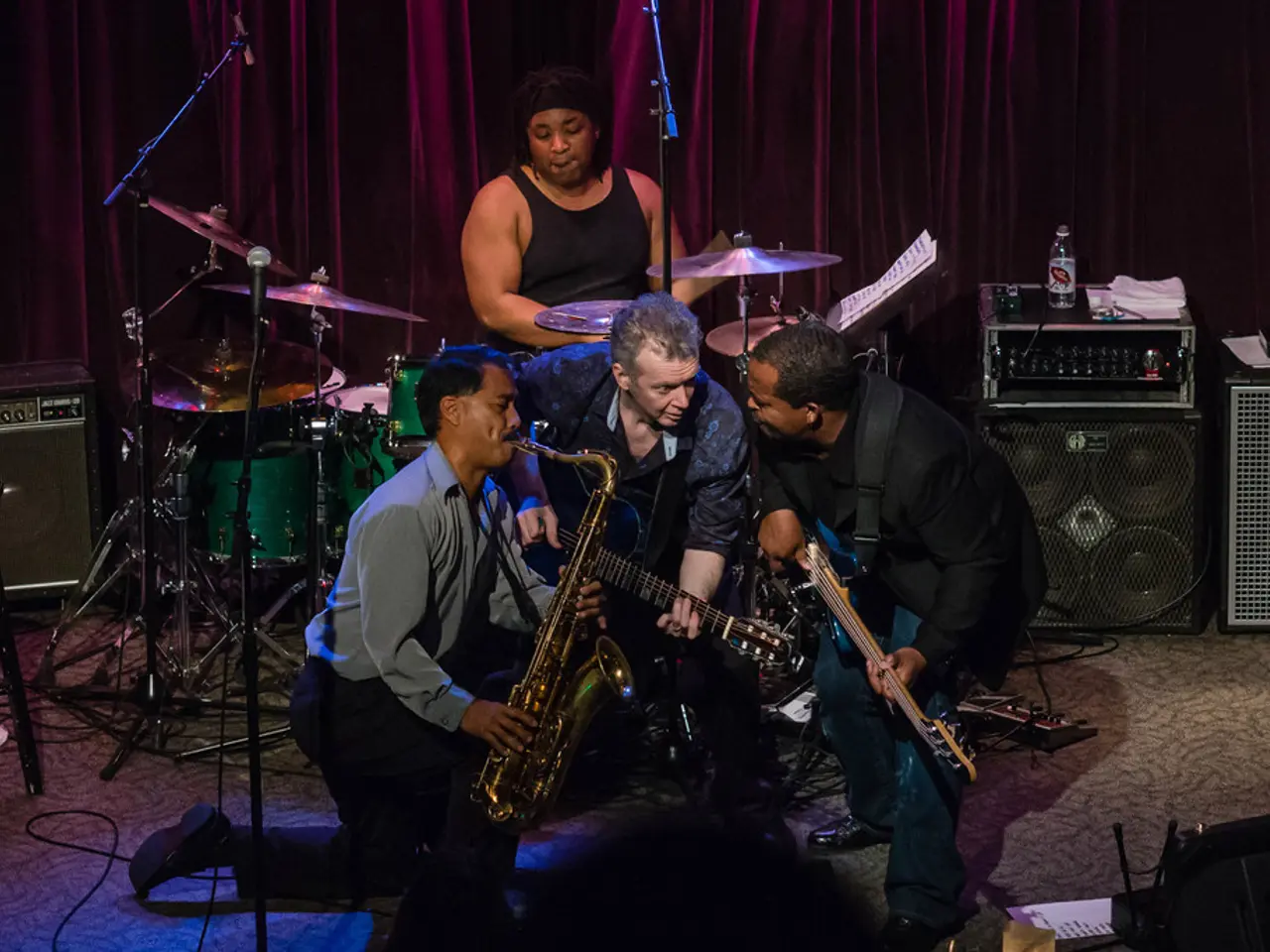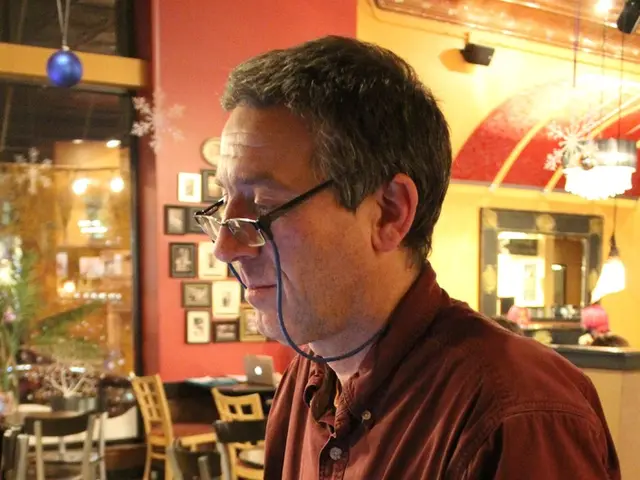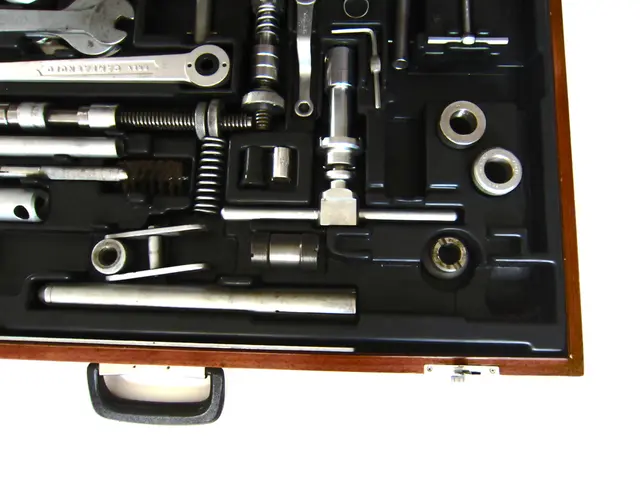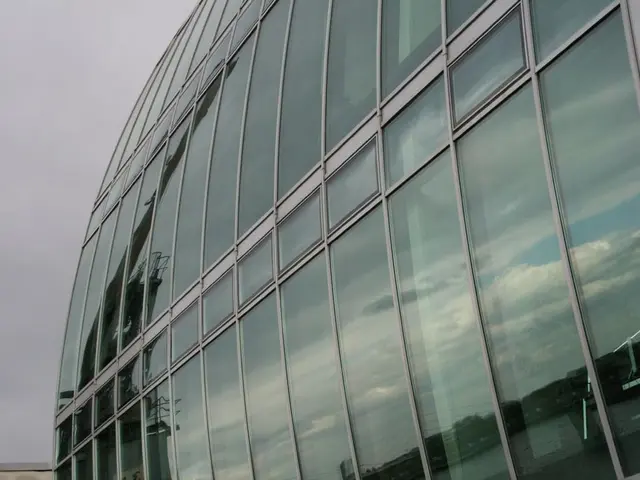Developments in the Realm of Industrial Music: Exploring how Electronic Body Music (EBM) Influenced Contemporary Electronic Genres
Electronic Body Music (EBM) is a genre that has left an indelible mark on the world of electronic music. Coined by the Belgian band Front 242 in 1984, EBM emerged as a rebellious fusion of avant-garde experimentation and raw mechanical sounds.
The band's album No Comment set the blueprint by combining cold, electronic sounds with bodily, danceable rhythms. This innovative approach revolutionized electronic music, bridging the gap between industrial aggression and dance rhythms, and shaping styles from techno and house to darkwave and hyperpop.
Front 242's influence was profound. Their album "Headhunter" (1988), which sold over 500,000 copies worldwide, was unheard of for an underground act at the time. Other acts like Nitzer Ebb also made significant contributions to EBM's development.
EBM's sound resonated in underground and mainstream electronic scenes alike. Nine Inch Nails' Pretty Hate Machine (1989) took inspiration from EBM's synth palette, while The Prodigy fused EBM's aggression with breakbeats. Even Lady Gaga's Born This Way (2011) incorporated EBM's mechanical energy.
The legacy of EBM is a testament to the power of rebellion and rhythm. Its ethos, raw, repetitive, and relentless, still resonates in an era of over-polished pop. In fact, 75% of modern darkwave artists cite EBM as a primary influence, according to a 2023 survey by "Electronic Beats".
Modern producers like Gesaffelstein and Rein continue the EBM tradition by blending vintage drum machines with contemporary production. From sweaty clubs to stadium tours, EBM's influence is undeniable.
The term "EBM" was first used in 1984, but the sound had been evolving since 1981 with bands like DAF. Nitzer Ebb's "Join in the Chant" (1987) remains one of the most remixed tracks in electronic history, with over 200 official versions.
EBM's role in shaping related genres like cold wave, darkwave, and minimal wave ensures its lasting impact on alternative and underground electronic music scenes. Its roots in European electronic pioneers like Kraftwerk helped set the stage for techno's rise out of Detroit and the interplay of electronic dance and industrial sounds globally.
The Belgian New Beat scene of the late 1980s, pioneered by artists such as Jo Casters, Herman Gillis (Sherman), and Roland Beelen (Bellucci), was heavily rooted in EBM fused with new wave, hi-NRG, acid house, and hip-hop. This era contributed to the broadening of electronic club music culture in Western Europe.
Furthermore, EBM's legacy ties into the wider evolution of electronic music in the late 20th century. Its fusion of aggression and groove reshaped electronic music, leaving fingerprints on everything from trance to industrial metal. EBM's influence is also evident in contemporary techno, with 60% of producers sampling EBM tracks between 2015-2022, according to "Resident Advisor" data.
In summary, EBM is a genre born from industrial music experimentation and European electronic dance, coined in 1984 by Front 242. It revolutionized electronic music by injecting danceable rhythms into industrial soundscapes, influencing techno, new beat, and modern electronic genres with a legacy that persists in various contemporary styles. Few genres have punched above their weight like EBM, transforming niche experimentation into a global movement.
Industrial music enthusiasts often acknowledge EBM as a critical influence, tracing its roots back to the cold, electronic sounds of the genre. (technology, music)
The underground scene thrived on the raw mechanical sounds of EBM, eventually shaping sub-genres like darkwave and influencing acts such as Nine Inch Nails. (underground scene, darkwave, music)
Today, modern producers like Gesaffelstein and Rein continue to push the boundaries of EBM, blending its trademark aggressive edge with contemporary technology in a testament to its enduring impact on the world of entertainment. (technology, entertainment, EBM)








